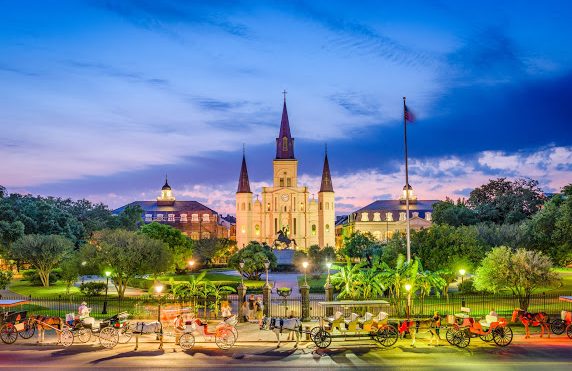New Orleans is home to many striking historical and cultural landmarks, not least of all the French Quarter. With the city having been “owned” by both Spain and France before becoming part of the United States, there is some confusion as to what comes from where. While the French Quarter’s architecture still borrows heavily from both, it isn’t difficult to learn the differences.
Spanish Control
Spanish and French influence can be seen throughout the city, but Spain has more to do with architecture than you may realize. After terrible fires during the Spanish period ravaged many of the original colonial buildings, Spain set strict building codes to prevent such destruction again. As such, most of the oldest buildings in the Quarter were built during this time. Some of the original French colonial constructs, like the Old Ursuline Convent, remain as remnants, but most are lost to history. It’s largely thanks to careful restoration and preservation that some of them still stand.
The Spanish Contribution
Spanish rule brought with it elements of the country’s architectural style, as well. Flat-top tiles, rear-facing courtyards, stucco-covered brick, and ornate ironwork are a few examples still prevalent throughout the Quarter. The many arched and hidden walkways and even how close buildings are to each other are results of the strict construction codes of the day. Some of the Quarter’s famous buildings, including the Presbytère and Cabildo, are also products of these architectural pursuits.
French Resilience
The French did not abandon their own architectural mainstays, however. The city was planned and designed by French colonists, after all. Though little from the colonial period survives, many structures that followed bear the influence. The Creole cottages and townhouses, for example, blend French and French-Canadian with Caribbean and Spanish styles. French-styled trusses and galleries also fall under this distinction. Charity Hospital was a French creation, as was the original St. Louis Cathedral, and the French Quarter itself was designed by a French native, populated by Creole citizens.
Though Spain set the stage for the French Quarter’s growth, France’s contributions cannot be ignored or understated. The professionals at Pascal Architects are no strangers to blending styles in their projects, much like New Orleans proudly portrays its many cultural backgrounds. Learn more about starting a project and contact Pascal Architects today.

